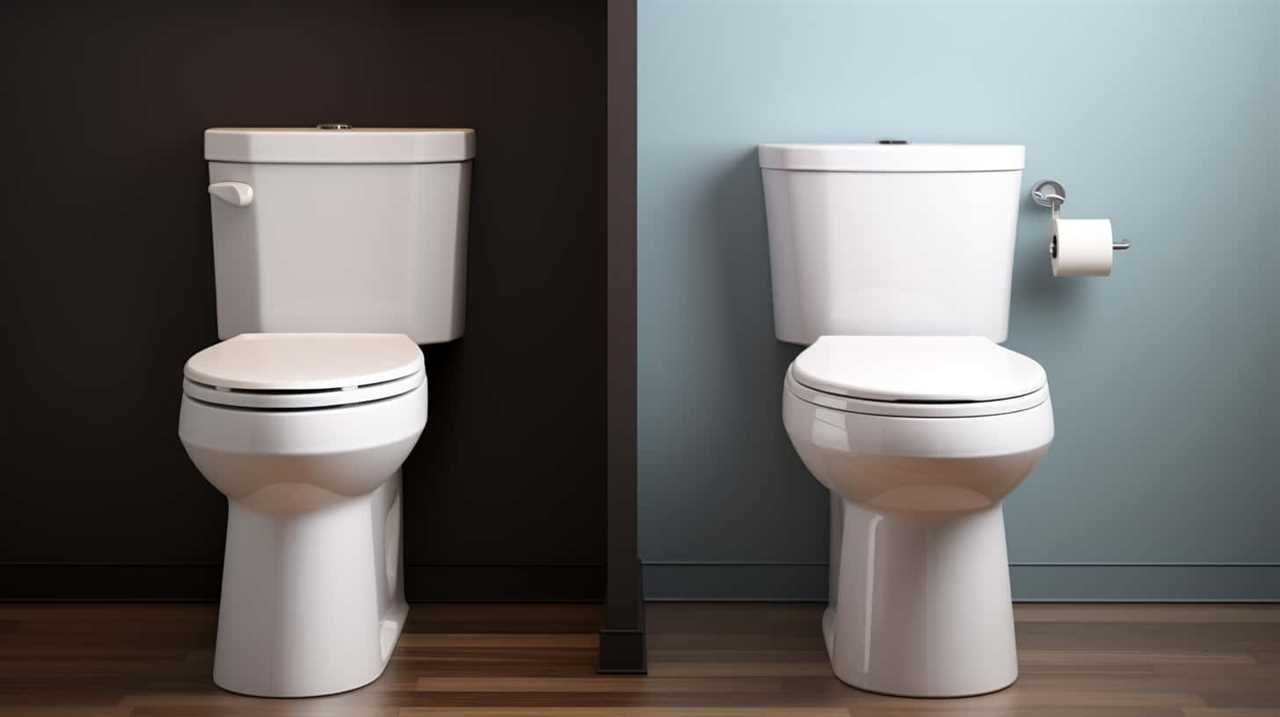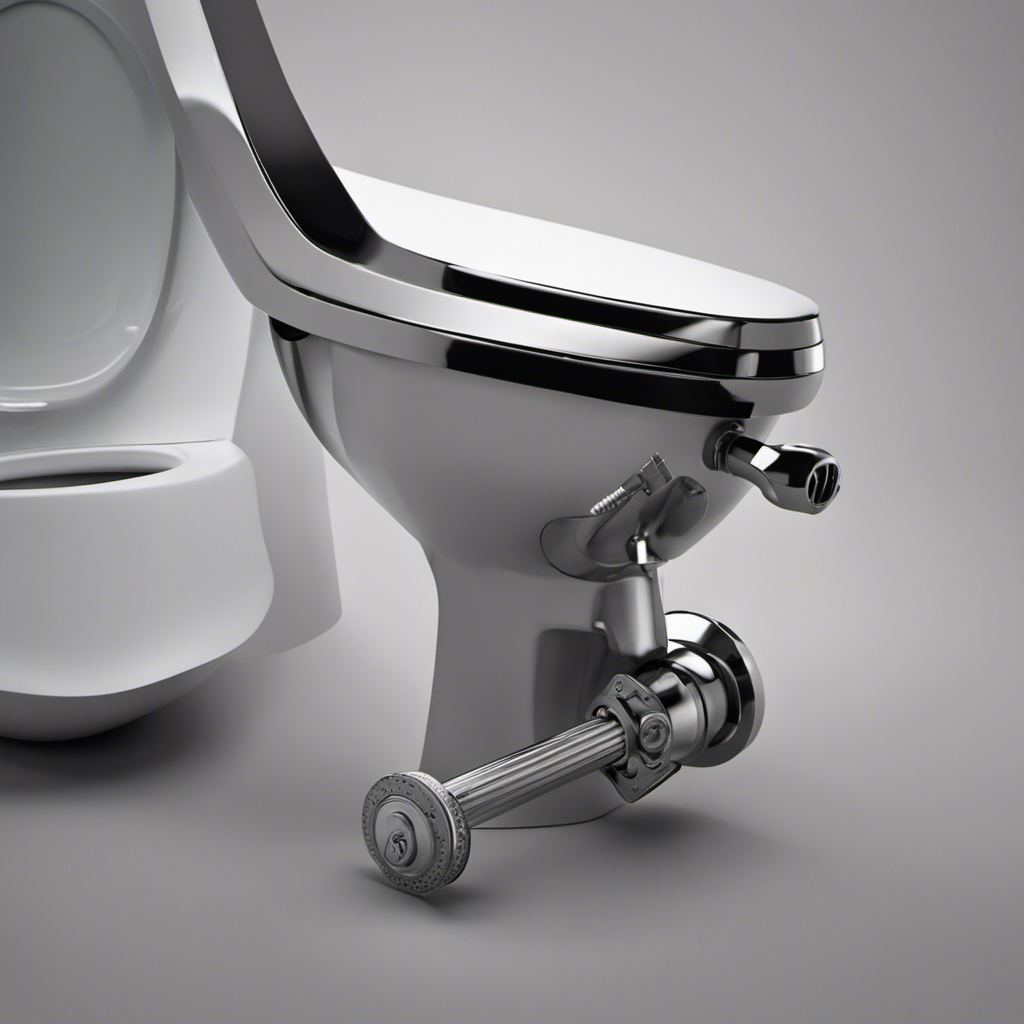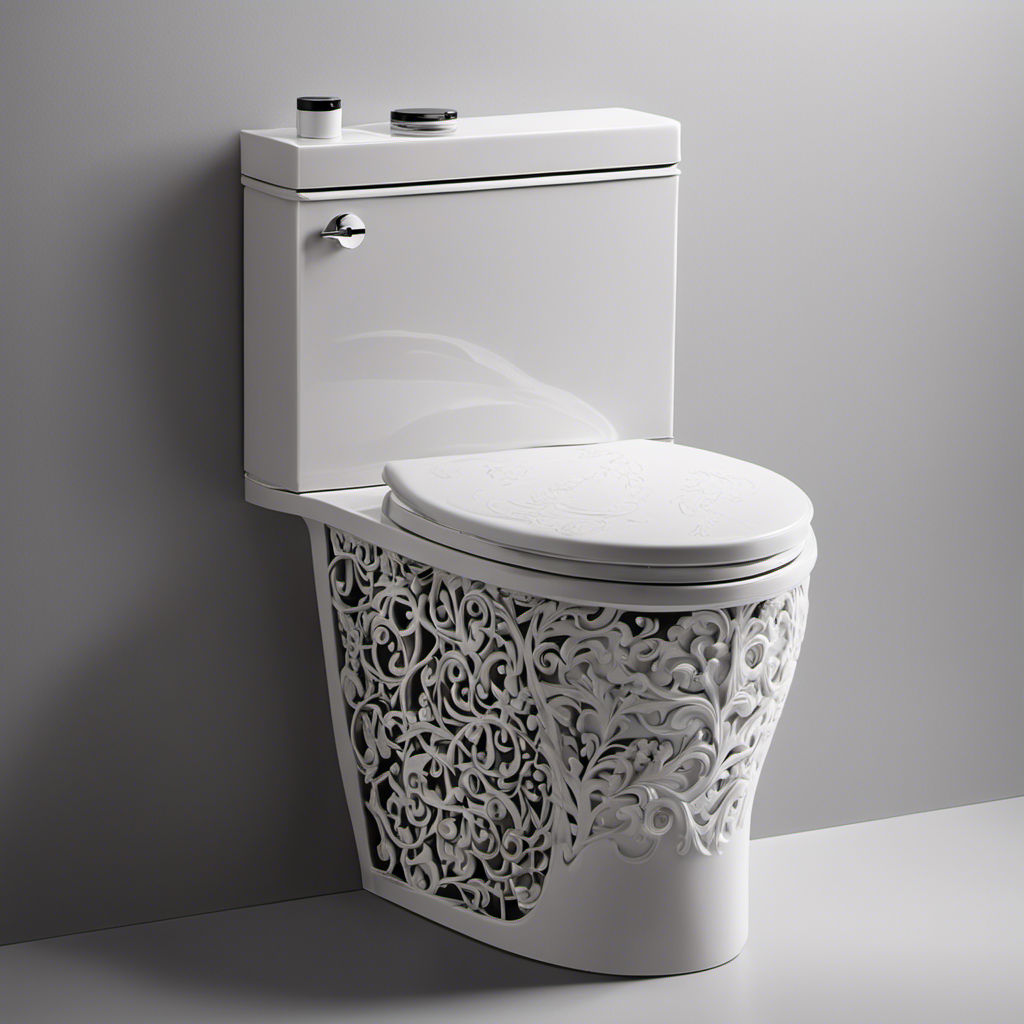Ever pondered whether flushing diapers down the toilet is a good idea? We’re here to clarify this important matter.
Flushing nappies may seem convenient, but it poses risks to our environment and plumbing systems.
In this article, we’ll delve into the environmental impact, explore alternative methods, and discuss proper disposal techniques.
Let’s delve into the intricate world of nappy disposal and make informed choices for a cleaner tomorrow.

Key Takeaways
- Flushing nappies can cause blockages in plumbing systems and clog pipes.
- Chemicals and contaminants in nappies can contaminate water sources and harm aquatic life.
- Flushing nappies can spread harmful bacteria and viruses.
- Proper waste management, such as using biodegradable nappies and responsible disposal methods, is crucial to protect water systems and the environment.
The Risks of Flushing Nappies
Flushing nappies down the toilet poses significant risks to both plumbing systems and the environment. Understanding the health hazards and impact on water quality is essential in comprehending the dangers associated with this practice.
When nappies are flushed, they can cause blockages in the plumbing system, leading to costly repairs and inconvenience. The absorbent materials in nappies can expand and clog pipes, resulting in backups and overflows.
Furthermore, the chemicals and contaminants present in nappies can contaminate water sources, affecting the quality of drinking water and harming aquatic life. These health hazards can include the spread of harmful bacteria and viruses, posing a risk to public health.
It’s crucial to raise awareness about the damaging effects of flushing nappies to protect our plumbing infrastructure and safeguard the environment.
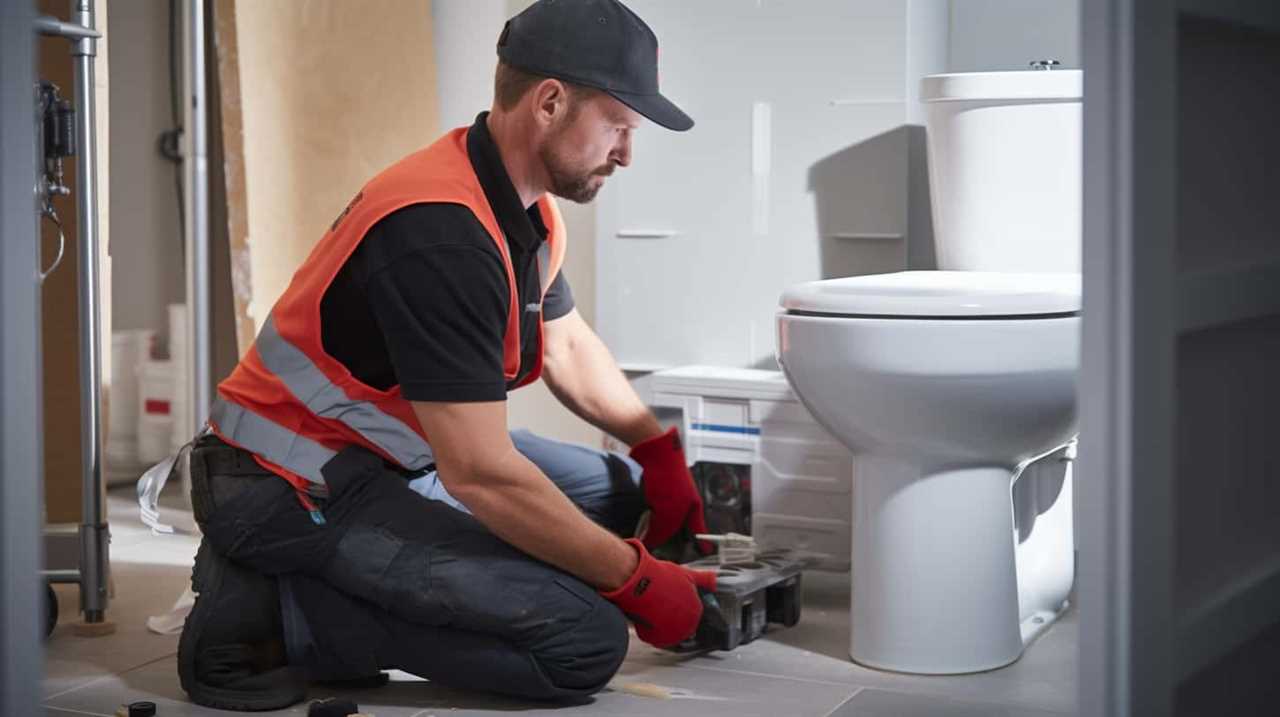
Understanding the Environmental Impact
Now let’s consider the ecological consequences of flushing nappies down the toilet.
This practice can lead to serious environmental issues, such as clogged sewage systems, water pollution, and harm to aquatic life.
It’s important to understand the alternatives to toilet disposal, such as proper waste management and using biodegradable nappies, to minimize the negative impact on our environment.
Ecological Consequences of Flushing
To fully grasp the ecological consequences of flushing nappies down the toilet, we must consider the impact on our water systems and the potential for contamination. The underestimated impact of flushing nappies can have long-term consequences for both the environment and human health. When nappies are flushed, they can clog pipes and wastewater treatment plants, leading to costly repairs and disruptions in the sewage system. Additionally, the materials used in nappies, such as plastics and chemicals, can contaminate water sources and harm aquatic ecosystems. To illustrate the magnitude of the problem, let’s take a look at the following table:

| Ecological Consequences of Flushing Nappies |
|---|
| Clogging of pipes and wastewater treatment plants |
| Contamination of water sources and ecosystems |
| Costly repairs and disruptions in sewage systems |
| Potential harm to human health |
It is crucial that we raise awareness about the detrimental effects of flushing nappies and encourage responsible disposal methods to protect our water systems and preserve the environment for future generations.
Alternatives to Toilet Disposal
To better understand the environmental impact, let’s explore alternatives to disposing of nappies in the toilet and their implications.
When it comes to recycling options, some communities have implemented programs that allow for the recycling of certain types of nappies. These programs typically involve collecting used nappies and sending them to specialized facilities where they’re processed and turned into new products. However, it’s important to note that the availability of such programs may vary depending on your location and local government regulations.
Speaking of regulations, government bodies often play a crucial role in setting guidelines and standards for waste management, including the disposal of nappies. These regulations help ensure that waste is handled in an environmentally responsible manner, minimizing its impact on the ecosystem. Therefore, it’s essential to stay informed about the specific regulations in your area regarding nappy disposal and to follow them accordingly.
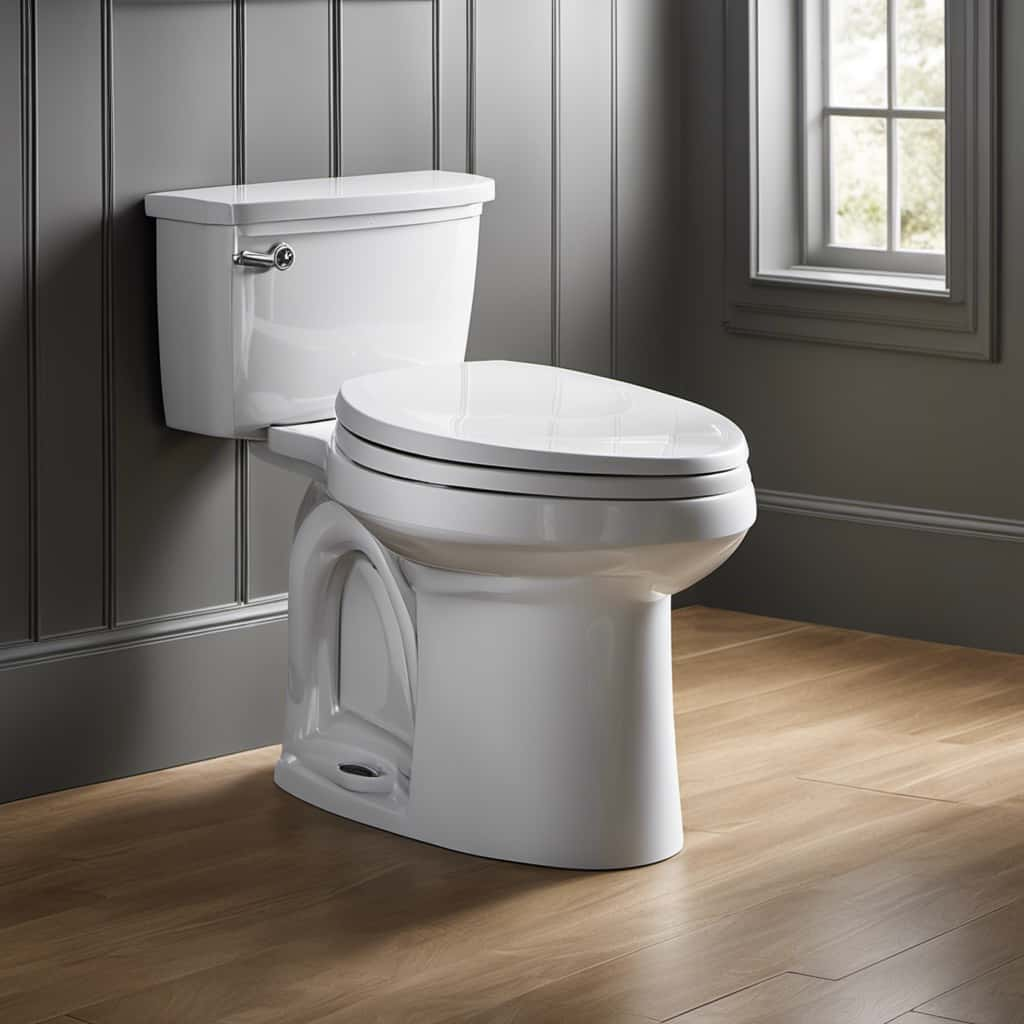
How Nappies Affect Plumbing Systems
When it comes to nappies and plumbing systems, there are a few key points to consider.
Firstly, flushing nappies down the toilet can lead to clogged pipes, as they aren’t designed to break down like toilet paper. This can result in costly repairs and inconvenience for homeowners.
Additionally, nappies can have a significant impact on sewage systems, causing blockages and backups that can affect the entire community.
Nappies and Clogged Pipes
Nappies can cause clogged pipes and negatively impact plumbing systems due to their inability to properly break down and dissolve. When nappies are disposed of in toilets, they pose significant risks to the plumbing infrastructure. The absorbent materials used in nappies, such as polymers and cellulose fibers, don’t easily disintegrate in water. Instead, they can clump together and create blockages in the pipes, leading to reduced water flow and potential backups.
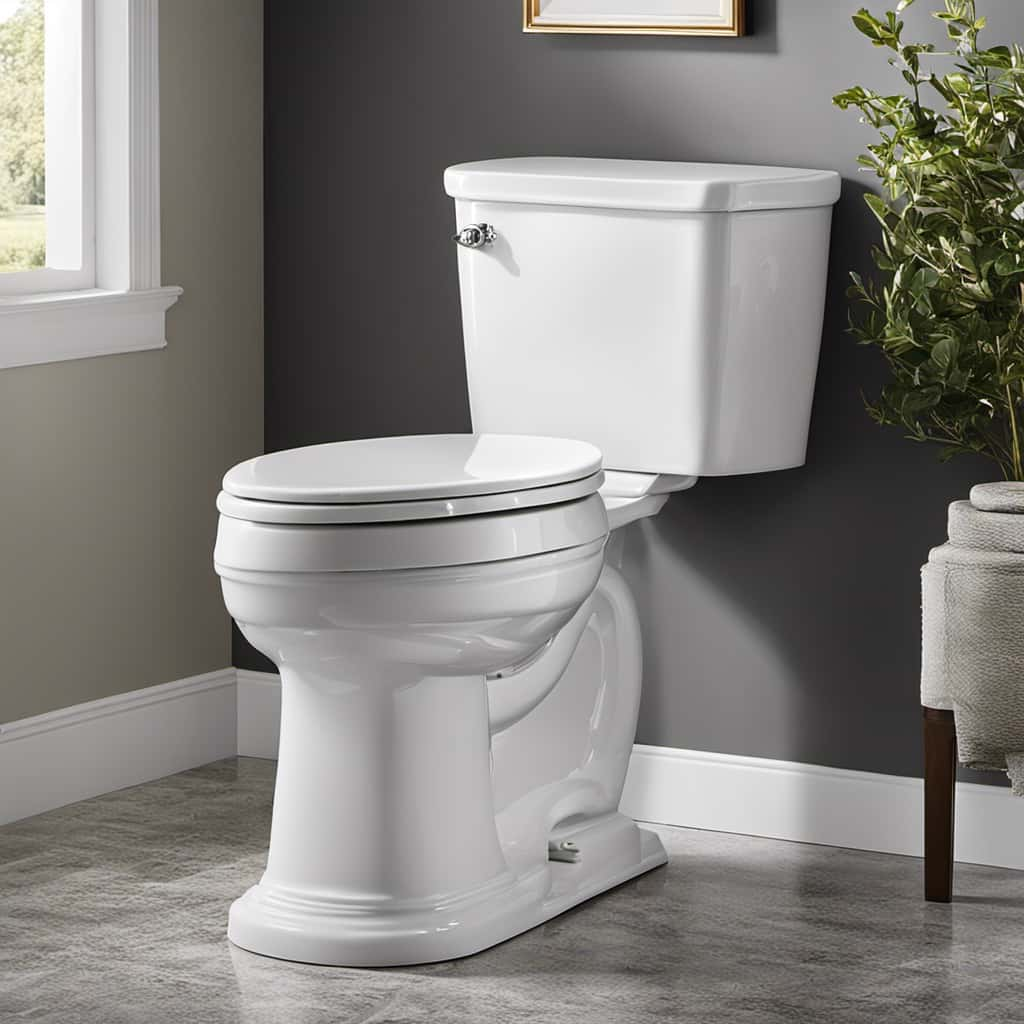
These blockages can be particularly problematic in older plumbing systems that may already have limited capacity. Additionally, nappies may also contain other non-biodegradable components, such as plastic tabs and adhesives, which further contribute to clogs and damage to the plumbing.
Therefore, it’s crucial to properly dispose of nappies in appropriate waste bins to prevent the costly and inconvenient consequences on plumbing systems.
Impact on Sewage Systems
Our sewage systems can experience significant problems due to the impact of nappies on plumbing systems.
Flushing nappies down the toilet can have a detrimental effect on water quality and pose health risks. When nappies are flushed, they can clog the pipes in our sewage systems, leading to blockages and backups. The absorbent materials in nappies, such as polymers and cellulose fibers, don’t break down easily and can cause obstructions in the pipes.
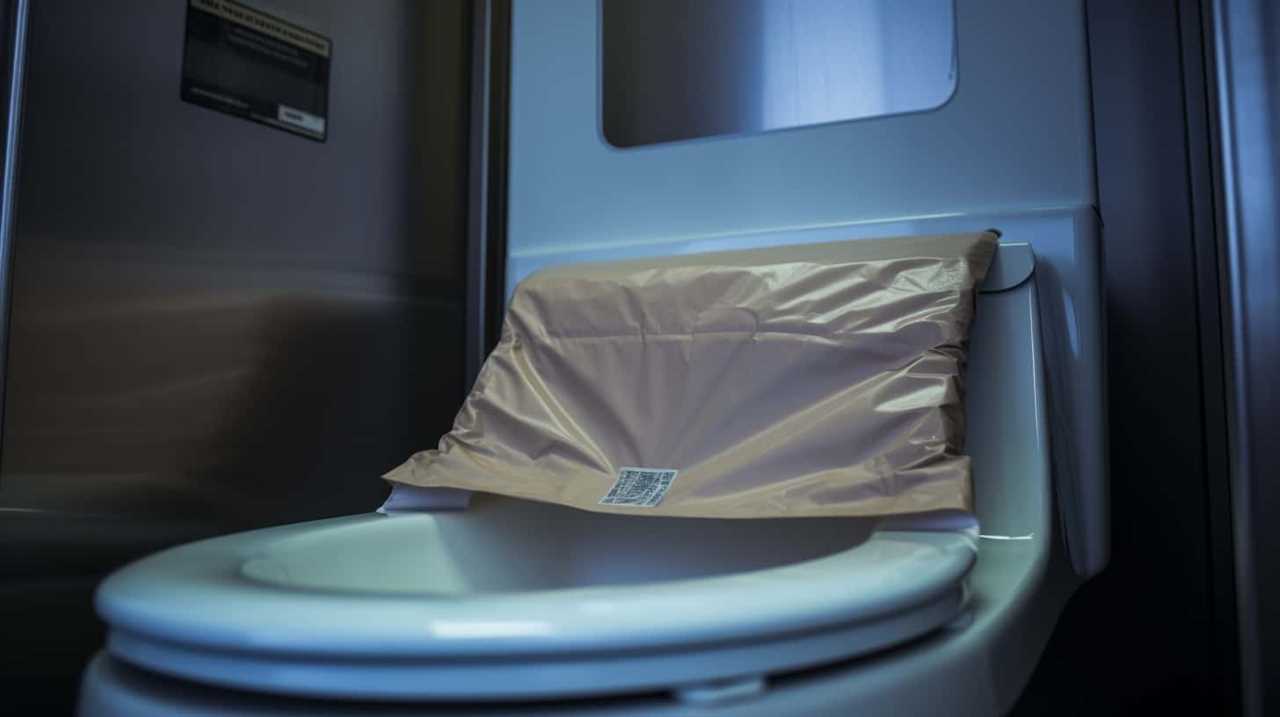
This not only affects the proper functioning of the sewage systems but also leads to increased maintenance costs and potential damage to infrastructure. Moreover, the accumulation of nappies in the sewage systems can contaminate the water supply, posing risks to public health.
Therefore, it’s essential to explore alternatives to flushing nappies in order to mitigate these issues and maintain the integrity of our sewage systems.
Alternatives to Flushing Nappies
We can explore other options instead of flushing nappies down the toilet. One alternative is composting, which offers several benefits. Composting nappies can help reduce waste and create nutrient-rich soil for gardening. To compost nappies, you need a specialized composting system that can handle the biodegradable materials. These systems typically have tightly sealed containers to prevent odors and pests.
Another option is using diaper bins specifically designed for nappy disposal. These bins have odor-locking mechanisms and sealed bags to contain the waste. Some models even offer hands-free operation for convenience. When choosing a diaper bin, consider factors such as capacity, ease of use, and odor control.

Proper Disposal Methods for Nappies
When it comes to proper disposal methods for nappies, there are a few environmentally-friendly options to consider.
One option is to use biodegradable nappies that can break down naturally over time.
Another option is to use a nappy recycling service, which collects used nappies and converts them into other products.
It’s important to note that improper disposal of nappies can have negative impacts on the environment, such as contaminating water sources and contributing to landfill waste.
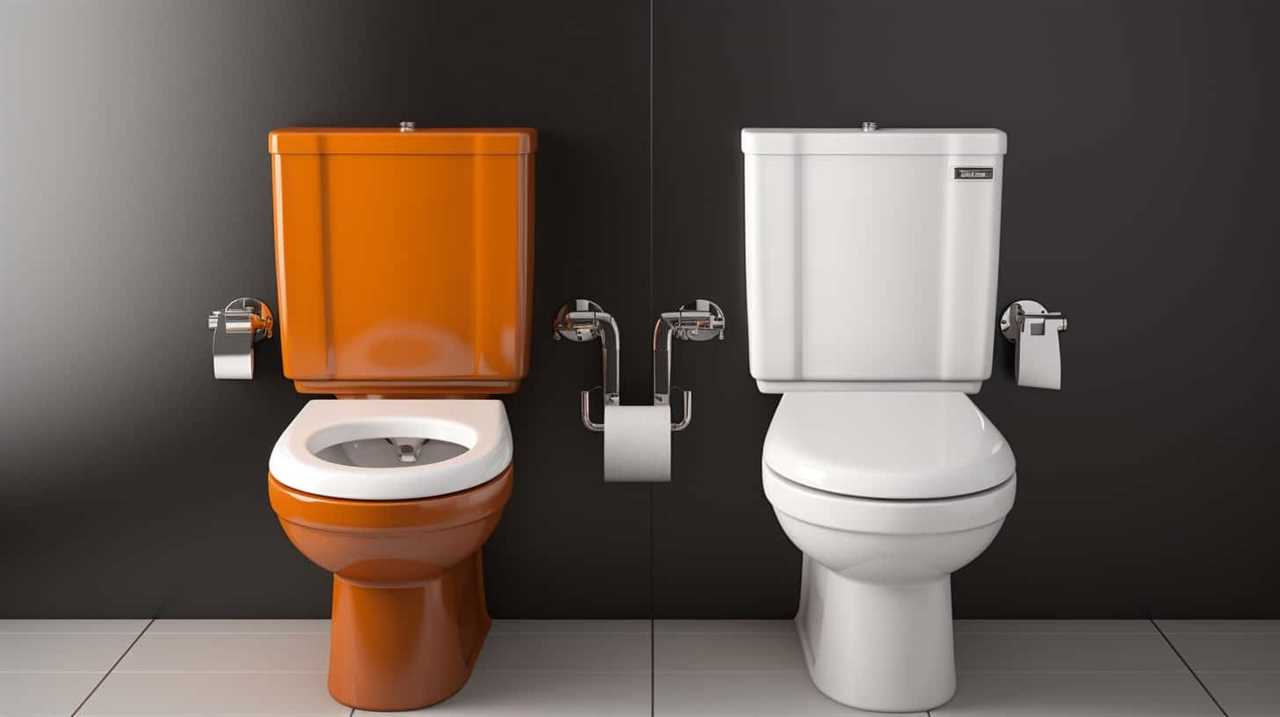
Environmentally-Friendly Disposal Options
How can nappies be disposed of in an environmentally-friendly manner?
When it comes to the proper disposal of nappies, there are a few options that can help minimize their impact on the environment:
- Recycling options: Some companies offer recycling programs specifically designed for nappies. These programs aim to divert nappies from landfills by separating the different components, such as plastic and pulp, and recycling them into new products.
- Composting benefits: Composting is another eco-friendly option for nappy disposal. Nappies that are made from natural materials, such as organic cotton or bamboo, can be composted in specialized facilities. This not only reduces waste but also allows the materials to break down and become nutrient-rich soil.
- Biodegradable nappies: Using biodegradable nappies made from plant-based materials is also a sustainable choice. These nappies are designed to break down more easily in landfill conditions, reducing their environmental impact.
Risks of Improper Disposal
To properly dispose of nappies and avoid potential risks, it’s crucial to follow appropriate disposal methods. Improper disposal of nappies can pose risks to public health and lead to contamination of water sources. When nappies aren’t disposed of properly, they can end up in landfills, where they take a long time to decompose. This can release harmful chemicals and pathogens into the environment, potentially causing water pollution and endangering aquatic life.
Additionally, if nappies are flushed down the toilet, they can clog pipes and sewage systems, leading to costly repairs and potential backups. Therefore, it’s vital to dispose of nappies in designated bins or bags and dispose of them with regular household waste. By following these proper disposal methods, we can minimize the risks to public health and prevent contamination of water sources.
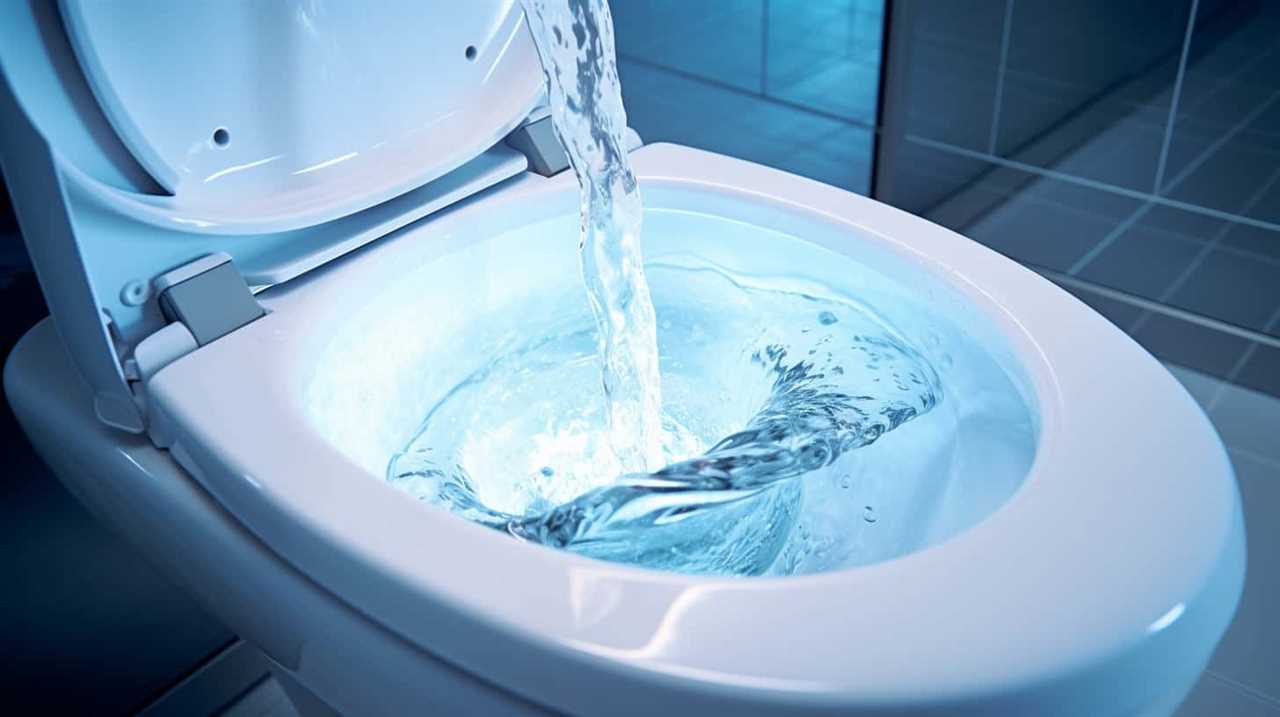
In the subsequent section, we’ll explore recycling options for used nappies.
Recycling Options for Used Nappies
We can explore recycling options for used nappies. While nappies are typically made with a combination of materials like plastic, absorbent polymers, and non-biodegradable fibers, there are ways to recycle them and reduce their impact on the environment.
Here are three recycling options to consider:
- Recycling facilities: Some recycling facilities have started accepting used nappies as part of their waste management programs. These facilities use specialized processes to separate and recycle the different components of the nappies, such as plastic and absorbent materials.
- Composting: Composting nappies involves breaking them down into organic matter that can be used as a nutrient-rich soil amendment. This process requires specific conditions and may require the use of composting facilities that can handle the decomposition of the nappies.
- Upcycling: Nappies can be upcycled into various products, such as insulation material or even plastic lumber. This process repurposes the nappies, giving them a new life and reducing the need for virgin materials.
Composting Nappies: Is It Possible
Continuing our exploration of recycling options for used nappies, let’s delve into the possibility of composting them. Composting offers numerous benefits, including reducing waste, improving soil quality, and minimizing environmental impact. Composting nappies involves a controlled decomposition process that converts organic materials into nutrient-rich soil called compost.

To better understand the composting process for nappies, let’s take a look at the following table:
| Composting Process for Nappies | Description |
|---|---|
| Collection | Used nappies are collected separately from other waste. |
| Pre-treatment | Nappies are shredded or pulped to accelerate decomposition. |
| Composting | The shredded nappies are mixed with organic materials like food waste and leaves in a composting system. |
| Curing | The compost is left to cure for several months to allow for complete breakdown and stabilization. |
| Application | The mature compost can be used as fertilizer for plants, gardens, or agricultural fields. |
Composting nappies is an effective way to divert them from landfills and create valuable compost. However, it requires proper infrastructure and education to ensure that parents understand the composting process and participate in the collection and separation of nappies. Transitioning into the next section, let’s now explore the importance of educating parents about sustainable diaper disposal methods.
The Importance of Educating Parents
As we delve into the importance of educating parents, we must emphasize the need for comprehensive knowledge and understanding regarding sustainable diaper disposal methods. It’s crucial for parents to be aware of the environmental impact of improper disposal and to adopt proper disposal methods.
Here are three reasons why educating parents on proper disposal methods is of utmost importance:

- Environmental Preservation: By educating parents about sustainable disposal methods, we can reduce the negative impact on our environment, protecting natural resources and biodiversity for future generations.
- Health and Hygiene: Proper disposal methods ensure the cleanliness and hygiene of our surroundings, preventing the spread of harmful bacteria and diseases.
- Economic Efficiency: Educating parents about cost-effective and eco-friendly disposal options can save them money in the long run, as they won’t be burdened with additional expenses caused by clogged pipes or sewage backups.
By equipping parents with the knowledge and understanding of proper disposal methods, we can collectively contribute to a cleaner and healthier environment for all.
Now, let’s explore the government regulations on nappy disposal.
Government Regulations on Nappy Disposal
To ensure proper diaper disposal, it is essential to understand the government regulations surrounding nappy disposal. These regulations aim to minimize the environmental impact of nappy waste and ensure the safe handling and disposal of used diapers. The table below provides an overview of some key government regulations related to nappy disposal.
| Regulation | Description |
|---|---|
| Waste Management Act | This act outlines the responsibilities of individuals, households, and waste management facilities in the proper disposal of nappies. It includes guidelines on collection, transportation, and treatment of nappy waste. |
| Environmental Protection Agency Guidelines | The EPA provides guidelines for the safe handling, storage, and disposal of nappies. These guidelines help mitigate the potential environmental pollution caused by nappy waste. |
| Water and Sewerage Authority Regulations | These regulations govern the flushing of nappies down the toilet. They prohibit the flushing of nappies due to the potential blockages and damage they can cause to the sewage system. |
| Local Council Bylaws | Many local councils have specific bylaws regarding nappy disposal. These may include requirements for the use of designated collection bins or the use of biodegradable nappies to reduce environmental impact. |
| Recycling Initiatives | Some governments promote recycling initiatives for nappies, encouraging the separation of nappy waste for specialized recycling processes. These initiatives aim to reduce the amount of nappy waste sent to landfills and promote sustainability. |
Understanding and adhering to these government regulations is crucial for ensuring proper nappy disposal and minimizing the environmental impact of nappy waste.
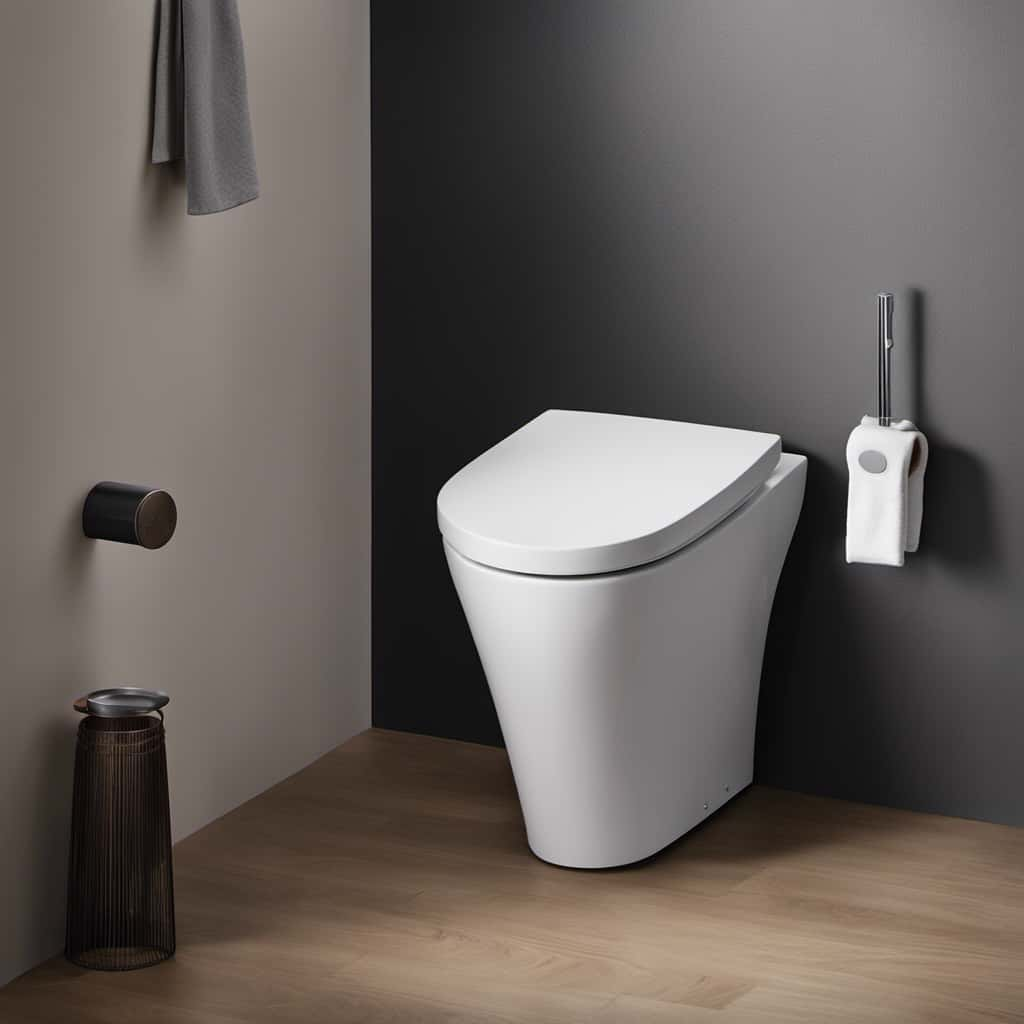
Conclusion: Making Informed Choices
After understanding the government regulations on nappy disposal, we can now make informed choices regarding the proper handling and disposal of diapers. Making responsible choices in this regard not only ensures the well-being of our environment but also has several benefits.
- Reduced environmental impact: Proper disposal methods minimize the release of harmful substances into water bodies and landfills, protecting ecosystems and public health.
- Improved sanitation: By following proper disposal practices, we prevent the spread of pathogens and reduce the risk of disease transmission.
- Cost savings: Opting for reusable cloth diapers or using biodegradable options can help save money in the long run while reducing waste.
Conclusion
In conclusion, it’s crucial for parents to understand the risks and environmental impact of flushing nappies down the toilet. Not only can it cause plumbing issues, but it also contributes to the growing problem of sewage blockages and pollution.
One interesting statistic to consider is that in the UK alone, over 3 billion nappies are thrown away each year, taking hundreds of years to decompose in landfills.
By educating parents and promoting proper disposal methods, we can make more informed choices that benefit both our plumbing systems and the environment.




